As organizations expand, their SaaS stack grows in tandem. Consequently, adept management of these software applications becomes crucial for cost saving, redundancy elimination, and optimizing SaaS utilization. However, manual management poses significant challenges, leading to the adoption of Software Management Platforms (SMPs).
Zylo and Zluri are both well-recognized SaaS management platforms. They help your team monitor SaaS usage, manage SaaS spend, reduce software risks, and automate license & renewal management. Though they offer almost similar functionalities, their approach varies. So, to determine the best among Zylo vs Zlur, it's important to thoroughly evaluate their key features and how they operate in real-time.
So, let's compare Zylo vs Zluri based on different key parameters. This comparison will help you find out which SaaS management platform caters to your modern enterprise needs.
Zylo vs Zluri: Comparison Based On Different Parameters
Below, we have closely compared the core functionalities of Zylo vs Zluri. With the help of these insights, you can determine which SMP is more apt to simplify and streamline the SaaS management process within your organization.
1. Application Discovery
Zylo vs Zluri both offer discovery features that allow your team to track SaaS applications present within the organization. However, both the SMPs implement different methods. Let's find out how they provide complete SaaS visibility.
- Zylo offers a discovery engine feature that leverages machine-learning analysis to accurately detect and categorize your SaaS apps and also identifies any new apps that are being added in your SaaS stack.
But which data do Zylo rely on to accurately discover apps? Well, Zylo relies on financial transaction data, by discovering previously obscured application subscription info it provides insights into SaaS app inventory, usage, and spending. Discovery method used by Zylo: Zylo uses financial transaction data to discover SaaS apps - How does it work?
The Zylo discovery engine firstly ingests all the organization's financial transaction related information, including direct purchases and employee expense transactions, through financial reports.
Then, the engine uses a suite of patent pending algorithms to analyze these financial information. It compares and categorizes all financial transactions, which helps to figure out all the different software used by the organization.
After that, Zylo's SaaS data scientists review the analyzed information to confirm if the data is accurate. The confirmed and accurate data is then added back to the Zylo discovery engine. This process helps improve the engine’s understanding and further identify different software each time it looks at the data. It creates a real-time record of all the software being used by the organization.
- On the other hand, Zluri does not solely rely on financial transactional data to discover SaaS apps. To make the SaaS discovery more accurate and thorough, it uses 9 different effective discovery methods, increasing the likelihood of providing 100% visibility into the SaaS stack, unlike Zylo.
Thus, Zluri's discovery engine ensures no software is overlooked or missed during the discovery process.
Discovery methods used by Zluri: Zluri uses 9 different ways to discover SaaS apps, which are single sign-on (SSO) and identity providers (IDP), finance tools, direct integrations with apps, desktop agents, browser extensions, MDM platforms, HRMS platforms, active directories, and CASB platforms.

- How does these discovery methods work?
Zluri’s data engine seamlessly identifies all the SaaS apps present within an organization's SaaS stack, even the ones that are left idle or not being used actively. So let’s explore the methods and find out how they help in discovery apps:
SSOs & IDPs: Zluri integrates with SSO and IDP systems such as Okta and Google Workspace and collects different types of data. SSO serves as a centralized access point, providing all the data about which employees are accessing which all applications.
Further, IDP maintains a record of user access permissions and interactions. By consolidating user identity information, IDP helps in understanding the landscape of SaaS app usage within the organization. Together, SSO and IDP contribute to SaaS discovery by providing a complete view of user logins, access permissions, and interactions. This integration allows your team to easily identify all the SaaS applications in use.
Finance tools: Zluri integrates with the finance tools, such as Netsuite and QuickBooks, to collect data. This discovery method gathers information about SaaS apps that are purchased by the employees using corporate cards or on their personal cards. Zluri collects these transaction details, which helps find out which all applications are being purchased. This helps in identifying the SaaS apps that are being bought by employees without IT teams knowing about it.
Also, Zluri gives you the flexibility to upload the transaction data manually by uploading a CSV file. However the result will be generated based on the uploaded data.
- Direct integration: Through direct integration, Zluri retrieves information directly from the source, capturing details about usage patterns, user access, and app usage. This direct integration allows your team to identify all SaaS apps in use, offering a comprehensive view of the organization's SaaS stack.
- Desktop agents: Zluri collects details such as apps installed, app sign in & sign out, and apps running in the background through desktop agents. Zluri's desktop agents, residing in the computer's toolbar, reads SaaS usage and activities. It then transmits this data to the Zluri server for in-depth analysis, aiding in the identification of all SaaS apps used across the organization.
- Browser agents: Zluri integrates with browser agents that contribute to SaaS app discovery by collecting data directly from web browsers. These methods track user interactions, capturing details such as visited websites, active browser tabs, and accessed SaaS apps. By analyzing browser activities, your team gains complete visibility into web-based tools and applications in use.
- MDM (Mobile Device Management) platforms: Zluri tracks the apps installed on mobile devices by integrating with MDM platforms. This discovery method helps identify the SaaS apps accessed via devices, contributing to a comprehensive understanding of the SaaS app landscape.
- CASB (Cloud Access Security Broker) platforms: Zluri monitors data flows between your organization and its cloud services by integrating CASB platforms. This helps ensure everything is safe and follows the rules. Along the way, CASB platforms identify all the different SaaS apps that employees are using. By doing this, they provide a clear picture of what apps are being used in the cloud, helping your team keep track of them.
- HRMS (Human Resource Management System) platforms: Zluri integrates with HRMS which helps in SaaS app discovery by managing employee data, including information related to software access and usage. By integrating with HRMS systems, your team gains insights into the apps utilized by employees. This helps in identifying SaaS apps associated with workforce productivity and collaboration.
- Active Directories: Active Directory helps in SaaS app discovery by serving as a centralized directory for user data and permissions within an organization. It keeps a record of who has access to what. When Zluri integrates with Active Directory, it provides insights into user logins and access patterns. This helps your team identify which SaaS applications are being used by your employees.
With the help of these 9 Zluri's discovery methods your team gains 100% visibility into your organization's SaaS stack. There is no chance of missing out on any applications even if one method misses out on identifying certain SaaS apps, the other discovery methods will help definitely detect the missed apps. Thus, Zluri's discovery engine leaves no room for oversight in identifying your applications.
2. License Management
- Zylo offers a comprehensive overview of SaaS app usage within a unified system of record. This system of record further helps your team to efficiently manage SaaS licenses in your organization.
Zylo further offers other capabilities as well to manage licenses effectively:
- Identifies overlapping applications: Zylo identifies applications with overlapping features and conducts thorough app-to-app comparisons. This enables your team to make informed decisions about which software best suits your business needs. By eliminating redundancy, Zylo saves on SaaS expenditures and effectively manages licenses.
- Rightsizes and reclaims licenses: Zylo enables your team to examine user access patterns to identify underutilized licenses. Once, underutilized apps are identified, your team can take a decision whether to shift to a suitable tier, remove them from the SaaS stack, reclaim them, or re-assign them to other employees. This strategy ensures optimal utilization of licenses and effective resource allocation.
- Meanwhile, Zluri consolidates all your SaaS apps and their respective licenses, providing a holistic view of your entire software inventory, all within a centralized dashboard. It not only provides an organized view of all licenses but also offers app usage data, including how many applications are being actively used, which apps are underutilized, how many users are there for each app, and more. This insight further helps your team effectively manage SaaS licenses.
Unlike Zylo, Zluri offers more advanced capabilities to streamline SaaS license management, such as:
- Meanwhile, Zluri consolidates all your SaaS apps and their respective licenses, providing a holistic view of your entire software inventory, all within a centralized dashboard. It not only provides an organized view of all licenses but also offers app usage data, including how many applications are being actively used, which apps are underutilized, how many users are there for each app, and more. This insight further helps your team effectively manage SaaS licenses.
- Rationalizes SaaS by removing redundancy: Zluri seamlessly identifies duplicate apps, applications of the same category, and those with similar functionalities. This insight helps eliminate redundancy and cut down your SaaS expenses.
- Rightsizes to suitable tier: Zluri detects underutilized SaaS apps based on user access patterns which helps your team to rightsize (downgrade) to appropriate tiers, optimizing utilization. This ensures that organizations only pay for the licenses they genuinely need.
- Auto-reclaims suboptimal licenses: Zluri eliminates the need for manual identification of unused licenses. It automatically identifies, reclaims, removes, or downgrades licenses based on predefined usage threshold policies. Unlike Zylo, Zluri's smart automation analyzes usage patterns and automatically reclaims licenses, streamlining the process for your team.
- Estimates license needs: Zluri uses powerful historical analysis and predictive models to accurately forecast future license requirements. This foresight enables your team to proactively set budgets for licenses, reducing uncertainties and ensuring optimal resource allocation.
3. Renewal Management
- Zylo streamlines the renewal management process for your team by offering a unified and organized view of all SaaS purchases and crucial data. This unified view helps your team to proactively manage SaaS purchases and renewals.
These are the renewal management features offered by Zylo: - Provides clarity of upcoming renewals: Even in scenarios with an extensive portfolio comprising thousands of applications, Zylo provides clarity on upcoming renewals and actionable insights on how to address them.
- Enables your team to set alerts: Zylo enables your team to set alerts well in advance, which further helps them plan and make strategic decisions for SaaS renewals preparation. This proactive approach ensures that your team is well-prepared to manage renewals smoothly and make informed decisions to optimize your SaaS portfolio.
- On the other hand, Zluri offers a renewal calendar tool that provides a more refined view of all the SaaS renewals in a single dashboard. So your team no longer has to go back and forth and open each application to check their renewal status. This way they can effectively manage SaaS renewals and save their productive time.
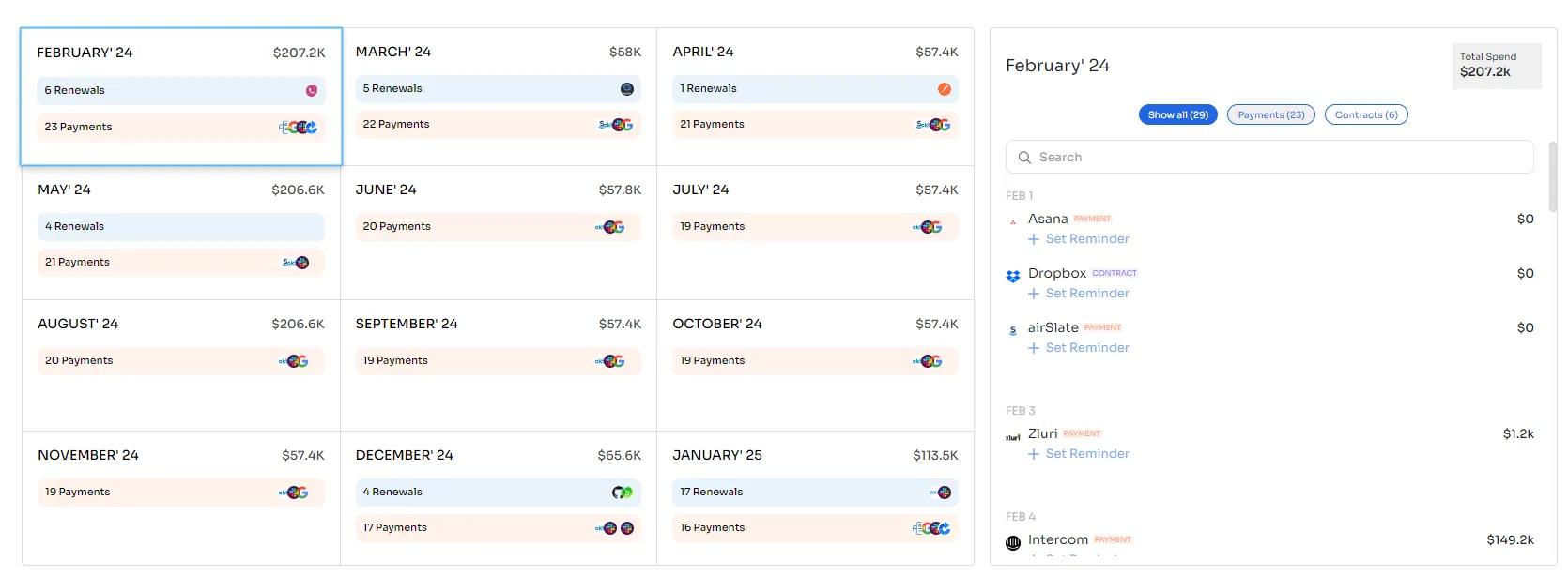
Let’s look at the renewal management features offered by Zluri:
- Centralized view of SaaS app renewals: Zluri consolidates comprehensive details about renewals into a centralized view within the renewal calendar. This consolidated overview includes upcoming renewals, pending payment, contract details, and more.
- Categorizes your renewals month wise: A noteworthy feature of Zluri’s renewal calendar is its categorization of renewals by month, ensuring a systematic arrangement that minimizes the risk of overlooking renewal dates and incurring late penalties.
- Provides automated renewal reminder: Zluri sends automated alerts and updates on upcoming renewals. So that before proceeding further with license payment, you can make an informed decision.
For example, you get an alert that you have to renew an app license within 1 week. So now that you are well aware of the app renewal in advance, you can plan accordingly.
Furthermore, your team can analyze app usage per user with the help of Zluri. And with the help of that data, you can further make informed decisions. Like whether to continue with the subscriptions and contracts or cancel them prior to the renewal date.
Also, with the help of these proactive renewal alerts, your team will no longer miss out on renewal dates. This means you can avoid paying extra charges that come when you forget to renew on time. These proactive alerts allow your team to prepare for renewals in advance and make cost-saving decisions. By doing so, you can eliminate unnecessary app licenses that might otherwise be overlooked. - Enables customized renewal prioritization: In addition, you have the flexibility to prioritize renewals based on urgency, allowing you to manually set alerts according to your specific needs. By default, the system provides alerts for contracts 30, 15, 7, and 1 day before renewal, and for payments, you receive alerts 7 and 1 day prior to renewal.
- Allows your team to disable auto-renewals: While auto-renewals can be convenient in certain scenarios, it's prudent to review licenses, especially when a significant investment is involved. Zluri provides the capability to turn off the auto-renew option, allowing you to thoroughly assess each renewal before proceeding with payments.
4. Spend Optimization
- Zylo equips your team with valuable insights into app usage and the current state of your SaaS stack, facilitating the identification of cost-saving opportunities. The features that help gather these cost-optimizing insights are:
- Benchmarking data: Zylo provides benchmarking data that allows your team to compare your portfolio, applications, and spending with companies similar to yours. These insights become a strategic tool in rightsizing and rationalizing your apps. Further, it assesses your annual spend and the number of applications in your field, gaining a comprehensive understanding of both your strengths and potential areas for improvement based on industry benchmarks.
- AI-powered saving center: Zylo's AI-powered Savings Center surfaces inactive users, compares pricing to industry benchmarks, and catalogs redundant applications to capture cost avoidance within contracts and savings at renewal. The artificial intelligence goes a step further by mapping licenses to contracts, benchmarks, and usage data, which ultimately helps in spend optimization.
- Whereas, Zluri provides your team with complete visibility and control over all software, ensuring that you only pay for what you need. This single platform offers advanced features to optimize SaaS spend, which include:
- Provides optimization summary: Zluri's optimization summary feature goes beyond just providing a snapshot; it enables your team to have a better understanding of spend optimization and potential cost-saving opportunities. By leveraging data from user past usage patterns, Zluri's optimization summary unveils valuable insights.
It not only estimates potential wastage but also identifies opportunities for significant savings. This includes a detailed breakdown of potential savings and realised savings. With this in-depth analysis, your team gains a precise overview, enabling informed decision-making for effective spend management and budget optimization.
- Provides optimization summary: Zluri's optimization summary feature goes beyond just providing a snapshot; it enables your team to have a better understanding of spend optimization and potential cost-saving opportunities. By leveraging data from user past usage patterns, Zluri's optimization summary unveils valuable insights.

- Accurate spend visibility: Zluri provides your team with all software spending data in one place, even the ones that are purchased outside the purview of the IT team. By providing an accurate overview of software spend data, Zluri ensures your team has a precise understanding of all software spends which will further help in spend management.
- Reconcile and optimize spends: Zluri generates cost-saving insights reports based on financial data and usage metrics. These depth reports help your team understand how money is being spent on software, and further, they can use these real-time insights to optimize cost.
- Uncover hidden app spends: Zluri discovers and manages all the elusive hidden app spends, ensuring comprehensive visibility into your software usage across departments. These hidden costs might not be immediately apparent, but Zluri's functionality ensures that they are discovered and brought into view. How does it work?
Zluri provides your finance team with the cost and actual spend (YTD) data, which helps them to identify the difference and obtain accurate hidden expense data.
By providing hidden app spend insights, Zluri enhances transparency and understanding of the overall expenses related to software usage across different departments within an organization. - Manage app cost centers for budgeting: Zluri ensures that internal budgets and cost centers are aligned based on actual spending data. Through automated chargebacks, your team gains the ability to monitor costs across departments, applications, users, and more.
- Negotiate better with price benchmarking: Zluri helps Optimize expenses by negotiating favorable software deals in alignment with industry standards. This ensures you acquire the best value while renewing licenses and contracts.
- Reconcile true-ups with contract costs: Zluri ensures that your true-ups align seamlessly with contracted costs based on the actual usage in the contracted terms at predetermined intervals.
5. Application Security
Zylo vs Zluri, both employ distinct strategies to manage application safety and security. Let's explore how each platform addresses security across various aspects
1. Critical App identification
- Zylo helps your team eliminate security blind spots by providing detailed insights into every application in your business. With Security Detail powered by Netskope, you can review security accreditations, certifications, and risk scores for each application.
- Meanwhile, Zluri categorizes applications based on their risk and threat scores, highlighting critical applications that may pose security concerns. If any application deviates from security and compliance standards, Zluri enables your team to restrict access, ensuring the security of your organization's data and protecting other apps from potential repercussions of Infiltrated applications.
2. Uncover Shadow IT
- Zylo solely depends on the financial transaction data discovery method to recognize SaaS applications existing within the organization. But, this approach carries the risk of overlooking shadow IT (unsanctioned applications or apps that are not known by the IT department).
However, to eliminate shadow IT to an extent Zylo provides employees with a one-stop shop to easily find approved software that meets their needs. - Whereas, Zluri uses a more effective approach by utilizing nine distinct discovery methods to identify SaaS apps within your organization. This comprehensive approach significantly reduces the chances of shadow IT occurring.
By diversifying the methods of discovery, Zluri ensures a more thorough and accurate identification of all SaaS applications in use, minimizing the potential for any overlooked or unauthorized software within the organizational ecosystem.
Also, Zluri offers app catalog & access requests, which is a collection of SaaS apps, already verified and approved by the IT department, reducing the risk of shadow IT. If any certain app is not available in EAS, employees can raise a request for that app and the IT team will notify the procurement team to attain the app.
Once approved, IT teams provide the access to employees within a matter of time. This helps increase employees productivity as they no longer have to wait for days to get app access to required apps. Also they no longer have to randomly acquire apps on their own which is a major source of shadow IT.
3. Real-Time Alerts
Zluri provides your team with real-time alerts whenever unauthorized users attempt to access applications. This timely notification enables IT teams to swiftly respond and implement preventive measures against potential security threats. By being alerted promptly, the IT team can take immediate actions such as blocking access, investigating the breach, or implementing security measures, ensuring the safety of sensitive data. On the other hand, as of now Zylo does not provide threat alert features.
Now let’s have a quick look at the Zylo vs. Zluri comparison table.
Zylo Vs. Zluri Comparison Table
Here is a comparison table of Zylo vs Zluri that will help you decide which one is more apt for your organization.
After going through the key parameters, you may have observed that both SMPs provide similar functionalities, however their approach varies. But the ultimate question arises how to choose the most suitable one?
Which Is More Suitable For Your Organization?
In the comparison of Zylo vs Zluri, it's clear that both SaaS management platforms have their own strengths. The decision on whether to go with Zylo or Zluri depends on your organization's specific needs and objectives. To make the right choice, consider factors like your budget, how efficiently you want the SMP to handle procurement or manage apps, your approach to spend optimization, and the importance you place in app security. By evaluating these aspects, you as a manager can pick the SaaS management tool that best matches your organizational goals and requirements.
FAQs
Does Zylo And Zluri Have Different Ways Of Identifying SaaS Apps?
Zylo uses financial tractional data to identify SaaS apps. Whereas Zluri uses 9 distinct methods to discover SaaS apps within the organization, minimizing the chances of missing out on apps.









.svg)



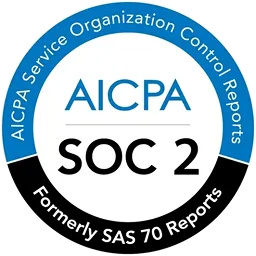
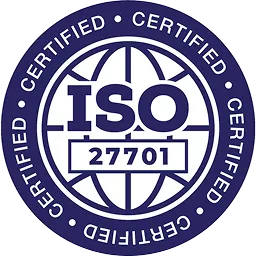


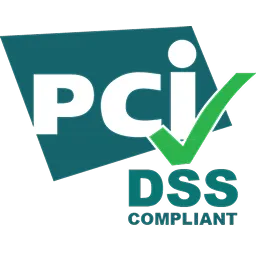
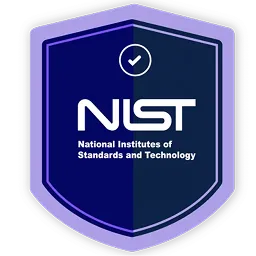





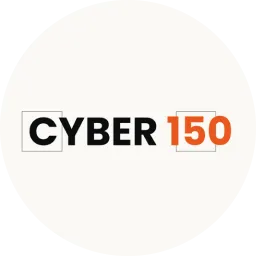






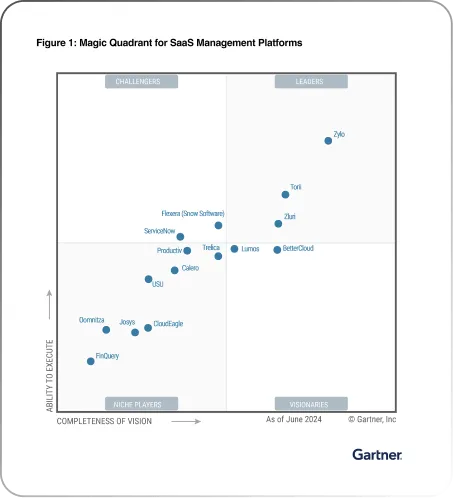







.webp)







.webp)
.webp)





.webp)